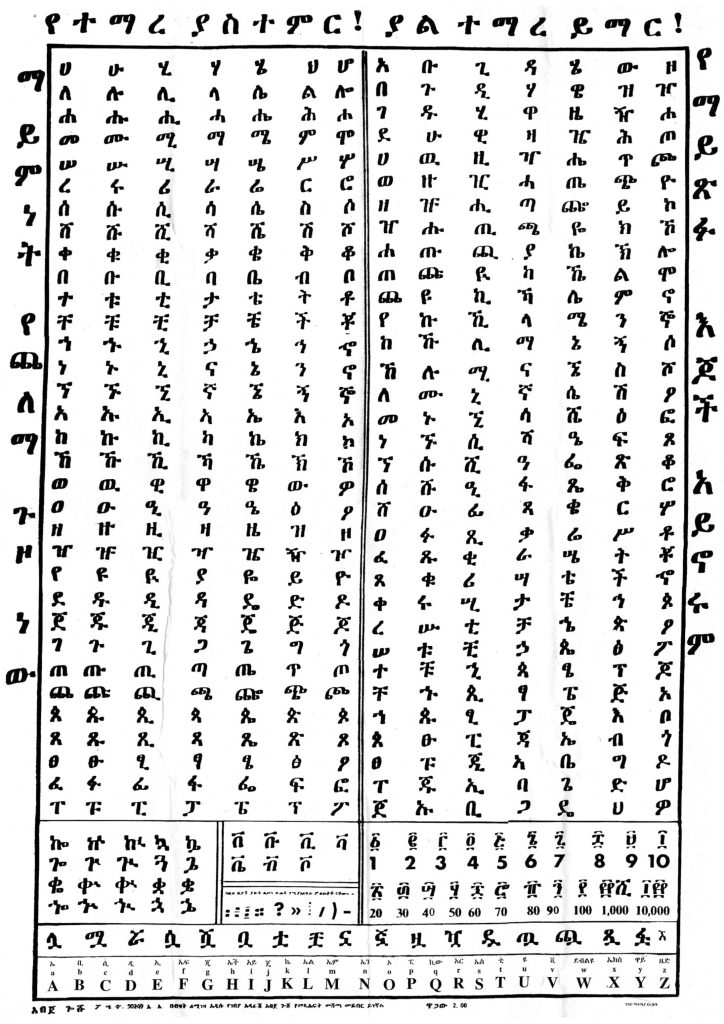Amharic, Ethiopia’s official language, is a Semitic language with deep historical roots. Its unique Ge’ez script reflects its ancient origins. Known for its poetic beauty and expressive nature, Amharic serves as a unifying force among Ethiopia’s diverse ethnic groups. It’s used in literature, media, and everyday communication, evolving to reflect modern realities while retaining its cultural significance.
Amharic employs a distinct script known as Ge’ez or Ethiopic script, classified as an Abugida. This intricate writing system features characters representing both consonants and vowels. Vowels are indicated by modifying the base consonant symbol through modifications or diacritic marks attached to the consonant symbols. These characters are collectively referred to as ‘fidel’.
The Amharic fidel comprises 33 consonant letters with seven variants representing vowels. These variants are created by appending a vowel to each consonant. Hence, there are a total of 231 characters in the Amharic fidel.
Ethiopia also has its own unique numerical system known as the Ge’ez numerals, which have been used historically for counting and writing numbers. This system is based on the Ge’ez script and has its own distinct characters for numbers. While the Arabic numerals are commonly used in modern Ethiopia for everyday purposes, the Ge’ez numerals still hold cultural and historical significance and are sometimes used in religious contexts or traditional ceremonies.







